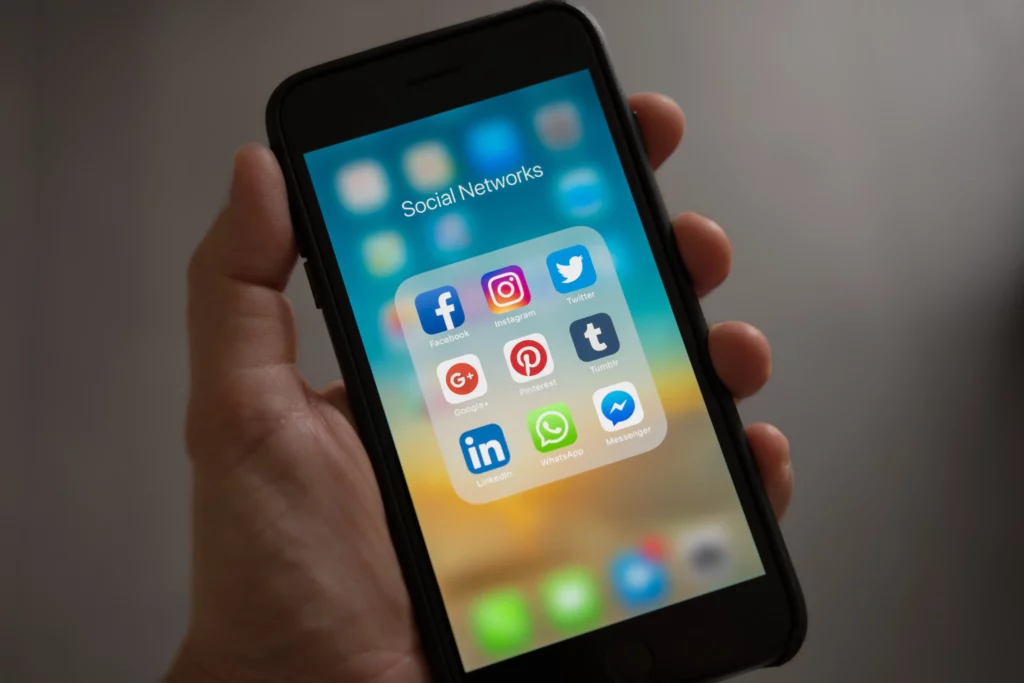Drug dealers are tapping into the vast reach of social media platforms, turning them into virtual narcotics marketplaces.
The problem is real and becoming surprisingly pervasive, putting teens and adults both young and old at risk.
Here’s what you need to know about dealers selling drugs on social media.
Unmasking Drug Deals on Social Apps
Drug dealers now boldly advertise narcotics like cocaine and MDMA on platforms like Instagram and WhatsApp.1
They showcase drug images, prices, and ordering details through anonymous profiles.
Shockingly, some even use Instagram’s sponsored posts to reach wider audiences, while others employ WhatsApp to broadcast their ‘menus.’
Rise in Digital-Era Drug Trade
Leading criminologist David Wilson suggests that the legal system is lagging and must adapt as crime evolves in this digital era.
Many dealers believe they’re beyond reach, especially given the low arrest rates for certain crimes.
Investigations and Anonymity
MailOnline investigations reveal numerous accounts displaying drugs, from marijuana to crystal meth.
Many profiles operate under fake names to maintain anonymity, linking to encrypted chat apps like Telegram for actual transactions.
Tech Company Responses
Instagram’s overseeing company, Meta, stressed its commitment to blocking drug-related content.
Between January and March, they reported removing over three million drug-linked posts.
Instagram attempts to ward off potential buyers by displaying warnings when users search drug-related terms.
However, sly dealers refer to drugs as ‘candy’ or other euphemisms to evade detection.
Risks and Public Concerns
Healthcare professionals warn of the immense risks.
Online drugs often contain hazardous substances like mercury or even rat poison.
There’s also concern about the authenticity of the sellers.
Thorrun Govind, an experienced healthcare lawyer, emphasized that tech companies must be more proactive, and parents must educate their children about the dangers.
Accountability and The Way Forward
Prof. Wilson stresses that social media platforms must accept responsibility and not rely solely on the police.
Instagram and others should ensure illicit advertisements aren’t permitted.
Official statements from both Meta2 and the Biden-Harris White House 3 emphasize their efforts to combat this issue.

How Drug Dealers Exploit Paid Ads
The Algorithm's Role
Algorithms, designed to curate and recommend content based on user interests and behaviors, play a significant role in what content appears on a user’s social media feed.
While these algorithms aim to enhance user experience by showcasing relevant content, they can inadvertently promote drug-related content.
For instance, if a user unknowingly interacts with disguised drug advertisements or content from related genres, the algorithm might interpret it as genuine interest and push similar content their way.
This can lead to a snowball effect where more and more drug-related or disguised content is recommended, broadening the reach of illicit ads.
The Challenge of Distinguishing Legitimacy
The inherent challenge lies in the algorithm’s inability to evaluate content morally; it simply operates based on user interaction patterns.
Distinguishing between legitimate and illicit ads becomes incredibly challenging when drug dealers employ tactics that mirror those of genuine advertisers.
If both legitimate and illicit content receive similar types of engagement, the algorithm struggles to differentiate between them, often resulting in the unintentional promotion of harmful content alongside genuine advertisements.
This highlights the need for more advanced detection methods and constant monitoring to ensure that the line between legitimate advertising and illicit promotion remains clear.
Countermeasures by Social Media Platforms
In response to the growing concern about illicit ads, primarily related to drugs, social media platforms have stepped up their game to identify and counteract these rogue advertisements.
One of the most prominent strategies employed is deploying advanced AI and machine learning models.
These models are trained using vast datasets to recognize patterns, coded language, and imagery associated with illicit activities.
Once trained, they can proactively scan and flag suspicious ads, sometimes even before they reach users’ feeds.
The advantage of machine learning is its ability to evolve constantly; as dealers develop new tactics, the models adapt by learning from new data.
Collaboration with Law Enforcement and Drug Prevention Agencies
Beyond technological solutions, platforms also understand the importance of human intervention and collaboration.
Teaming up with law enforcement and drug prevention agencies provides platforms with the necessary expertise and real-time intelligence to stay one step ahead.
This synergy facilitates a rapid response to emerging threats but also aids in creating awareness campaigns, equipping users with the knowledge to identify and report dubious content.
Through technology and collaboration, social media platforms are ardently working to create a safer digital space for all users.
Risks for Users and the Wider Public
Data Privacy Concerns
On a more covert level, there’s a looming danger concerning data privacy. Interactions with illicit vendors expose users to potential data breaches, where personal information can be harvested and misused. This can manifest in various forms, from users being tracked and blackmailed to falling victim to sophisticated scams.5 The digital drug bazaar not only poses immediate health risks but also carries with it deep-seated societal and privacy concerns.Recommendations and Solutions
Combatting the nefarious use of social media for drug promotions demands a multifaceted approach.
Technology to Fight for the Cause
For platforms, proactive measures include enhancing their AI and machine learning algorithms to better detect and shut down suspicious activities.
Regularly updating these tools to adapt to the ever-evolving tactics of drug dealers is crucial.
Moreover, platforms should consider running awareness campaigns directly on their sites to inform users about the dangers of online drug procurement.
Education for Adults and Teens
Educating the public is paramount.
Schools, community groups, and other institutions can host informational sessions, spotlighting the risks of drug purchasing on social media and dealers’ subtle tactics.
Knowledge is a potent antidote, and an informed public is less likely to fall prey to such threats.
Communities Coming Together
Empowering communities with the knowledge and tools to identify and report suspicious activities fosters a collective sense of responsibility.
Encouraging a culture of vigilance, where users actively look out for one another and report dubious content, can significantly aid platforms in their mission to purge illicit activities.
With technological advances, public education, and community collaboration, the digital sphere can become a safer environment for all its users.
The Ongoing Fight for Safer Social Media
The unchecked promotion of drugs on social media underscores a grave digital-age challenge, exposing users to the dangers of unregulated substances and normalizing drug culture among the vulnerable.
Platforms, users, and authorities must unite in this fight.
Platforms must enhance detection mechanisms, users should be educated and vigilant, and authorities need to reinforce digital policing.
Together, a safer and more responsible online community can be fostered.
If you or someone you know is struggling with addiction, we are here to offer support. Cornerstone Healing Center is an Arizona drug rehab.
We provide holistic healing approaches, focusing on recovery’s physical and emotional aspects.
With a supportive environment and a team of dedicated professionals, we offer a comprehensive approach to overcoming addiction and rediscovering a life of balance and well-being.
SOURCES:
[2] Meta: Enforcing Against Drug Sales
[3] The White House: Enforcement Awards for Efforts to Stop Illicit Drug Trafficking
[4] SOCIAL MEDIA Drug Trafficking Threat
[5] Social media a gold mine for scammers in 2021








